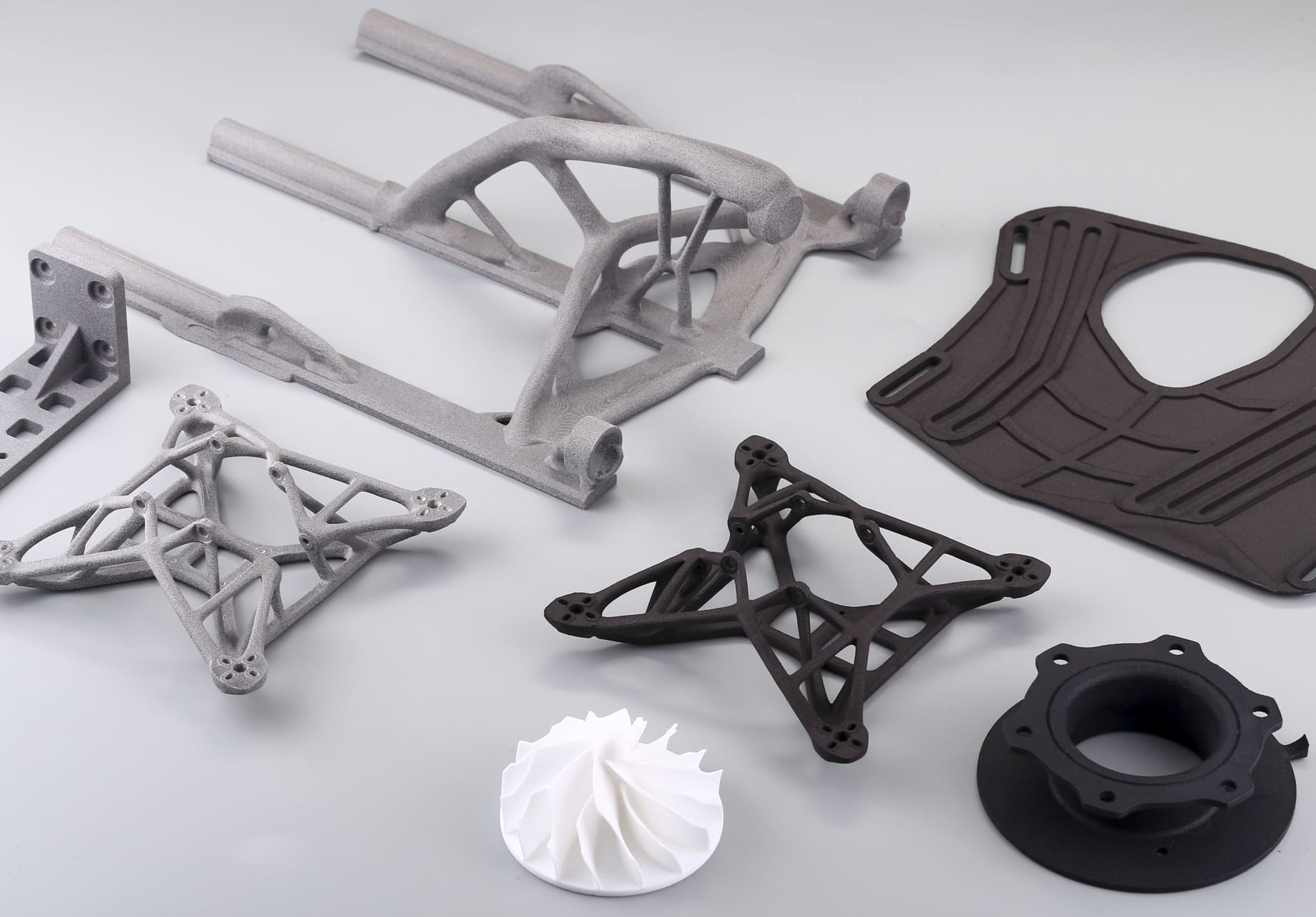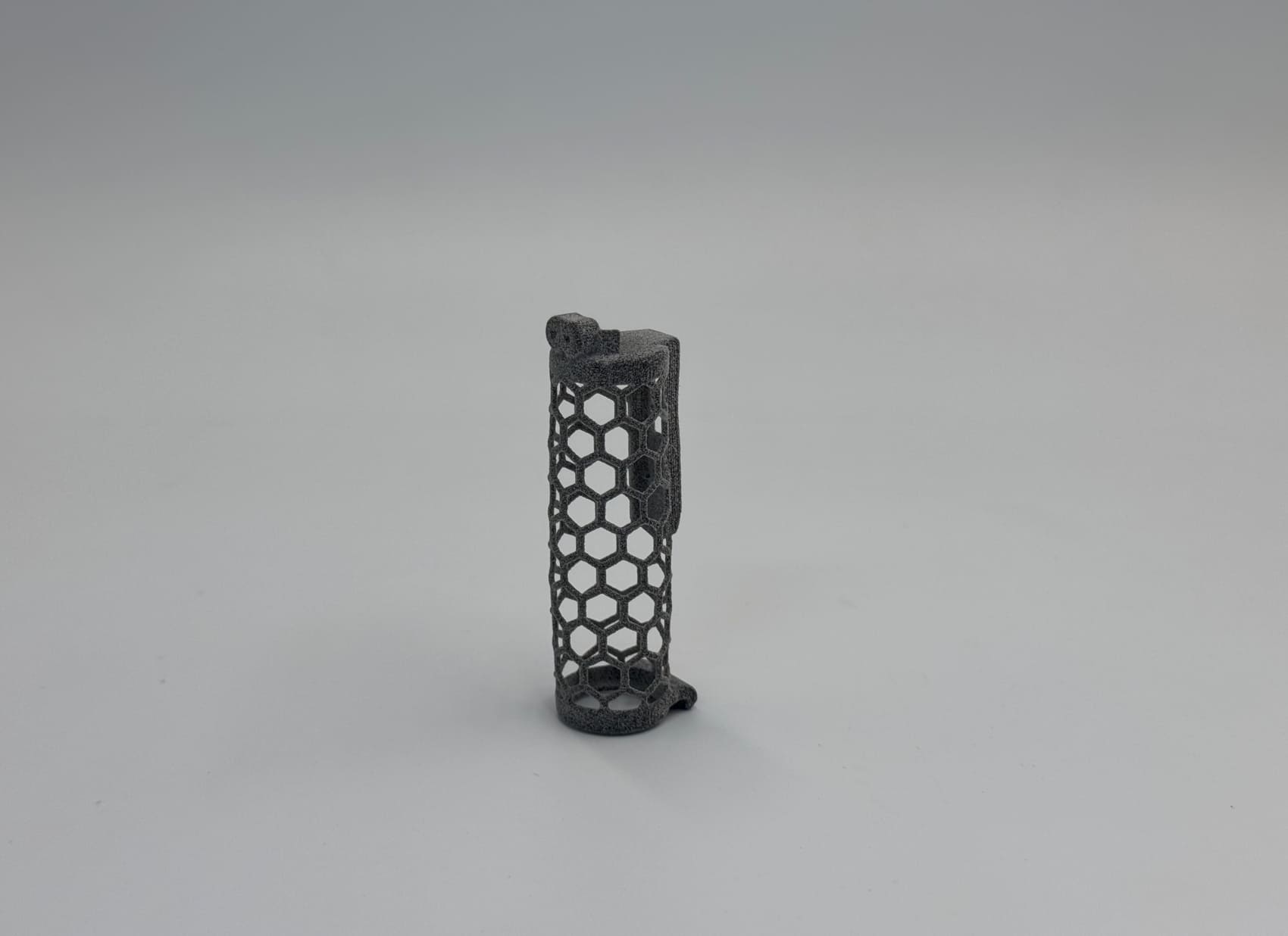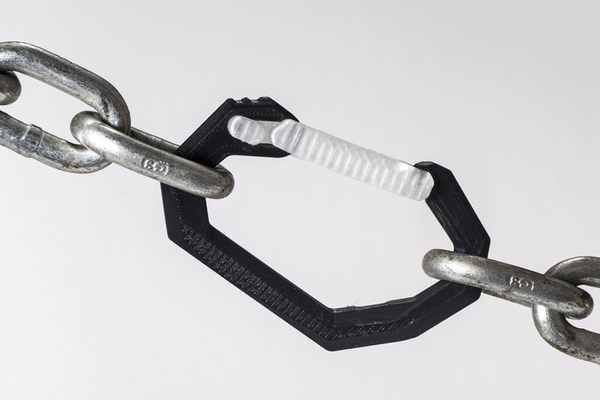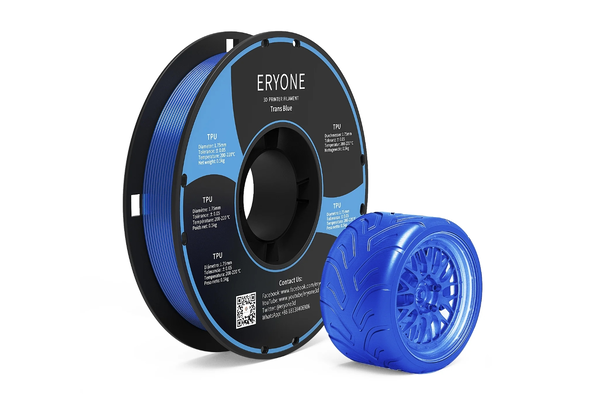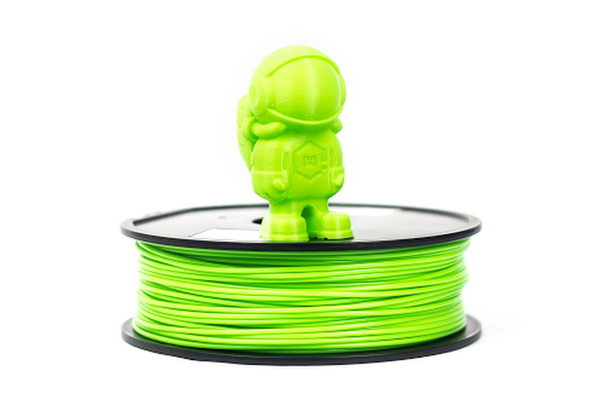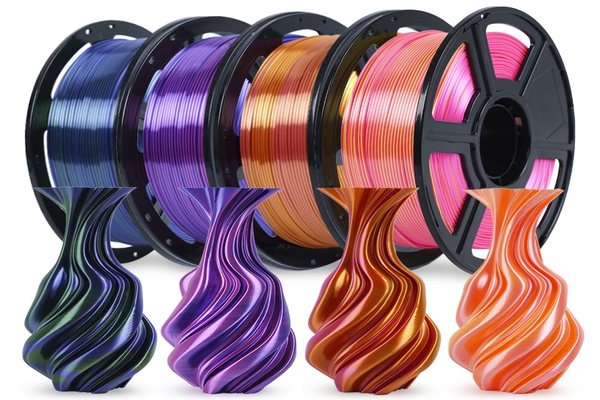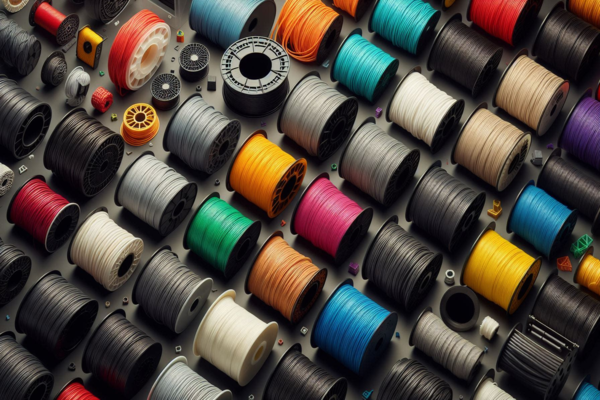What are flexible filaments for 3D printing?
Flexible filaments are a unique class of 3D printing materials known for their flexibility and resilience. They belong to the family of Thermoplastic Elastomers (TPE), which are polymers that combine the properties of rubber with the processing capabilities of thermoplastics. This hybrid nature allows them to be stretched and flexed while maintaining their structural integrity.
The most commonly used type of flexible filament is thermoplastic polyurethane (TPU) filament. TPU is renowned for its flexibility, durability, and resistance to oils and greases, making it an ideal material for a wide range of applications, from industrial parts to consumer goods.
Common Features of Flexible Filaments
● Elasticity: They can stretch significantly without breaking, mimicking the behavior of rubber bands in some cases.
● Strength: Despite their flexibility, they can be surprisingly strong and resistant to impact.
● Chemical Resistance: Many flexible filaments can withstand exposure to chemicals, oils, and greases.
● Temperature Tolerance: They can operate effectively across a broad range of temperatures.
Types of Flexible Filaments
1. TPU Filament
Example: MH PRO Series TPU
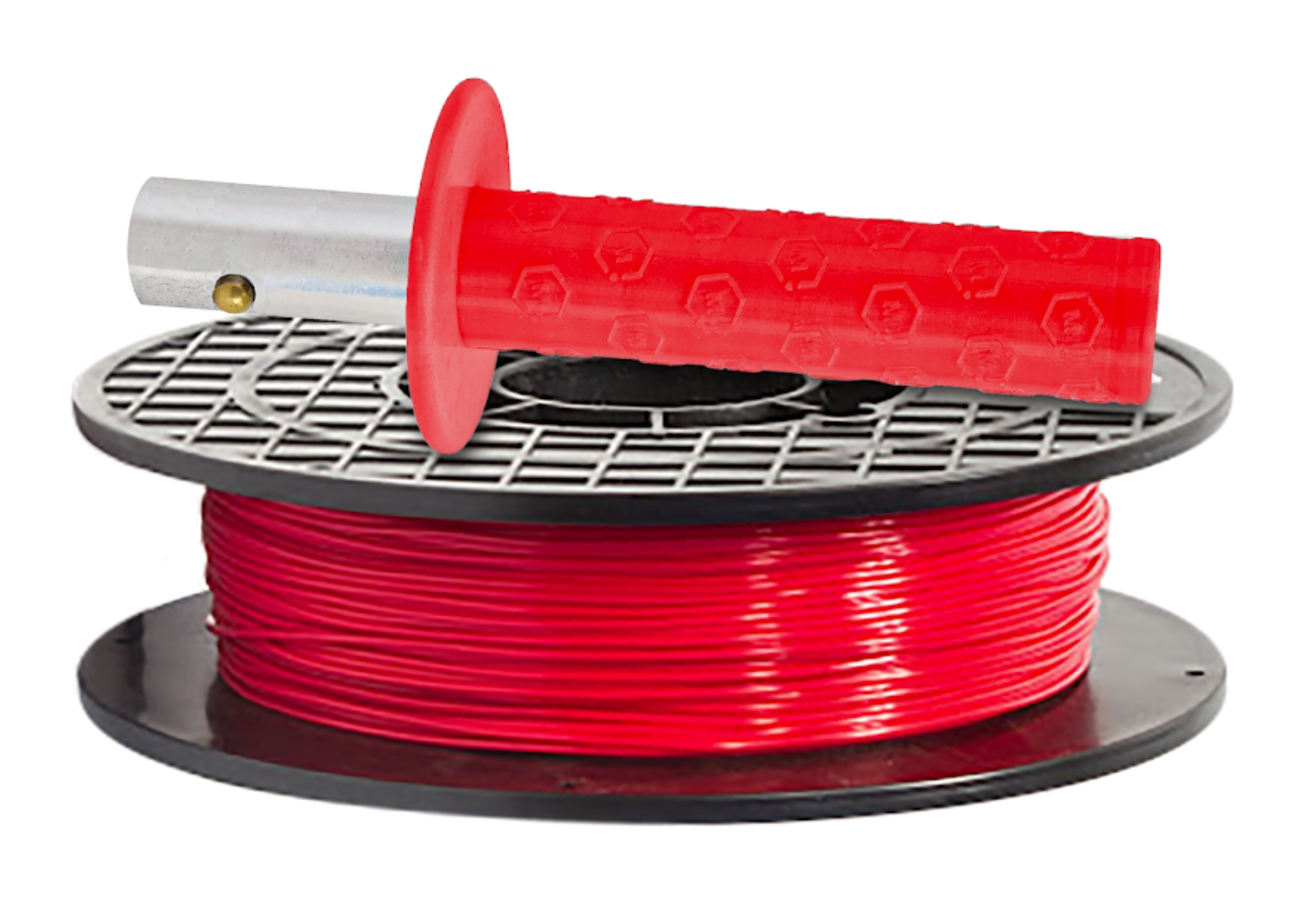
Image Source: MatterHackers
Mechanical Properties
TPU filament is known for its outstanding flexibility, tear strength, and elongation capabilities. It has a higher glass transition temperature than PLA, around 80°C, which means it can handle low temperatures well without becoming brittle. TPU’s elasticity allows it to stretch and bend, making it ideal for parts that need to withstand stress without losing shape.
Printer Settings
● Print Temperature: 220-250°C
● Bed Temperature: 40-60°C
● Print Speed: 15-30 mm/s
● Layer Height: 0.1-0.3 mm
● Retraction: Minimal or disabled to prevent clogging due to the material’s flexibility.
2. TPE Filament
Example: Gembird TPE Filament
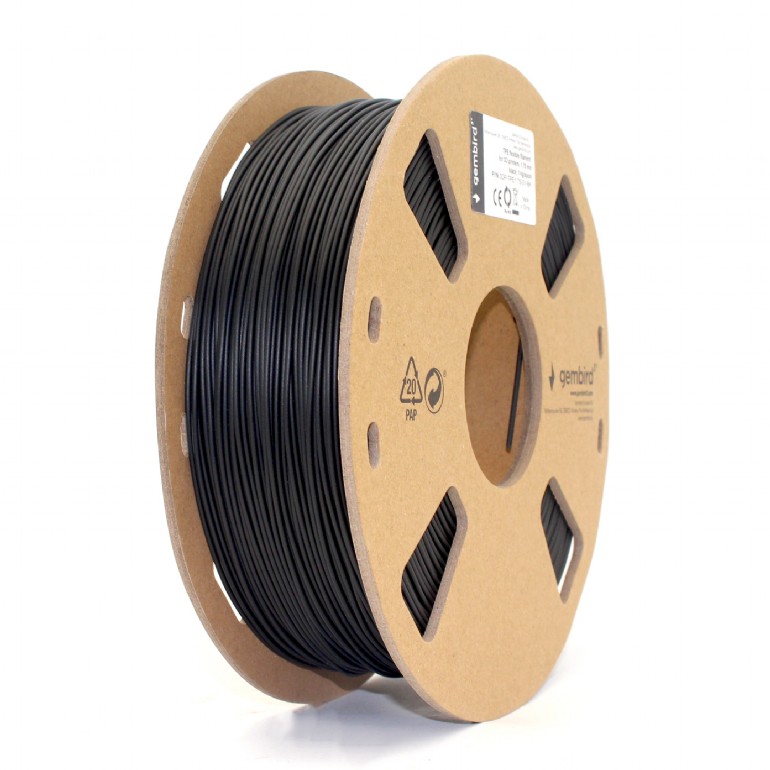
Image Source: Gembird
Mechanical Properties
TPE filament is highly valued for its exceptional capacity for elongation and impact resistance. It can stretch significantly without permanent deformation, making it ideal for parts that need to bend or absorb impacts. TPE’s high friction coefficient also ensures that prints have a non-slip surface akin to rubber.
Printer Settings
● Print Temperature: 210-230°C
● Bed Temperature: 30-50°C
● Print Speed: 15-30 mm/s
● Layer Height: 0.1-0.3 mm
● Retraction: Minimal or disabled to prevent clogging.
3. TPC Filament
Example: Formfutura FlexiFil TPC Filament
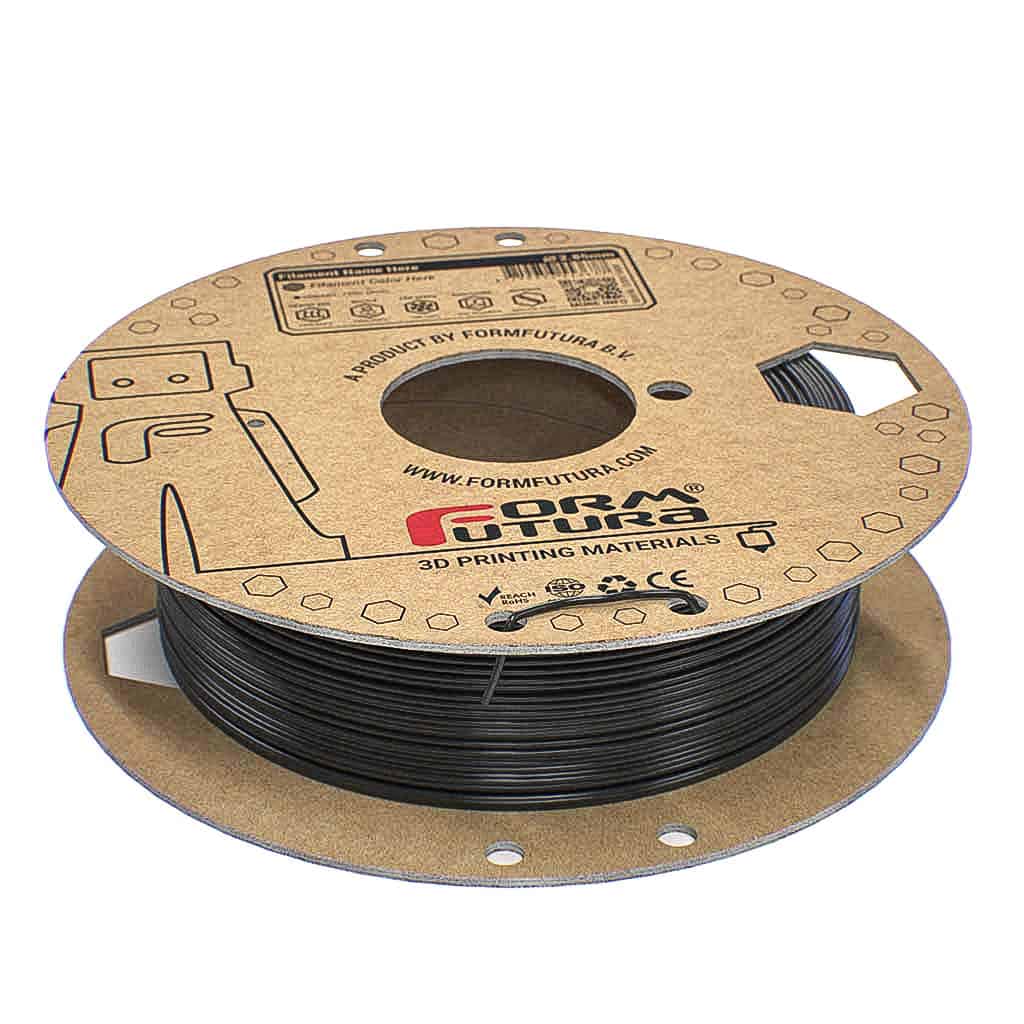
Image Source: Formfutura
Mechanical Properties
TPC filament boasts a unique combination of flexibility, durability, and strength. It exhibits superior elongation at break, meaning it can stretch significantly without damage and return to its original shape. This filament maintains its mechanical performance even at low temperatures, with a glass transition temperature of around -35°C and a melting point of 158°C. Its resilience and ability to withstand dynamic stresses make it suitable for parts that endure regular bending, twisting, or compression forces.
Printer Settings
● Extruder Temperature: 220-260°C
● Bed Temperature: 90-110°C
● Print Speed: 5-30 mm/s These settings help manage TPC’s flexibility and ensure high-quality prints.
4. TPA Filament
Example: Taulman Natural PCTPE
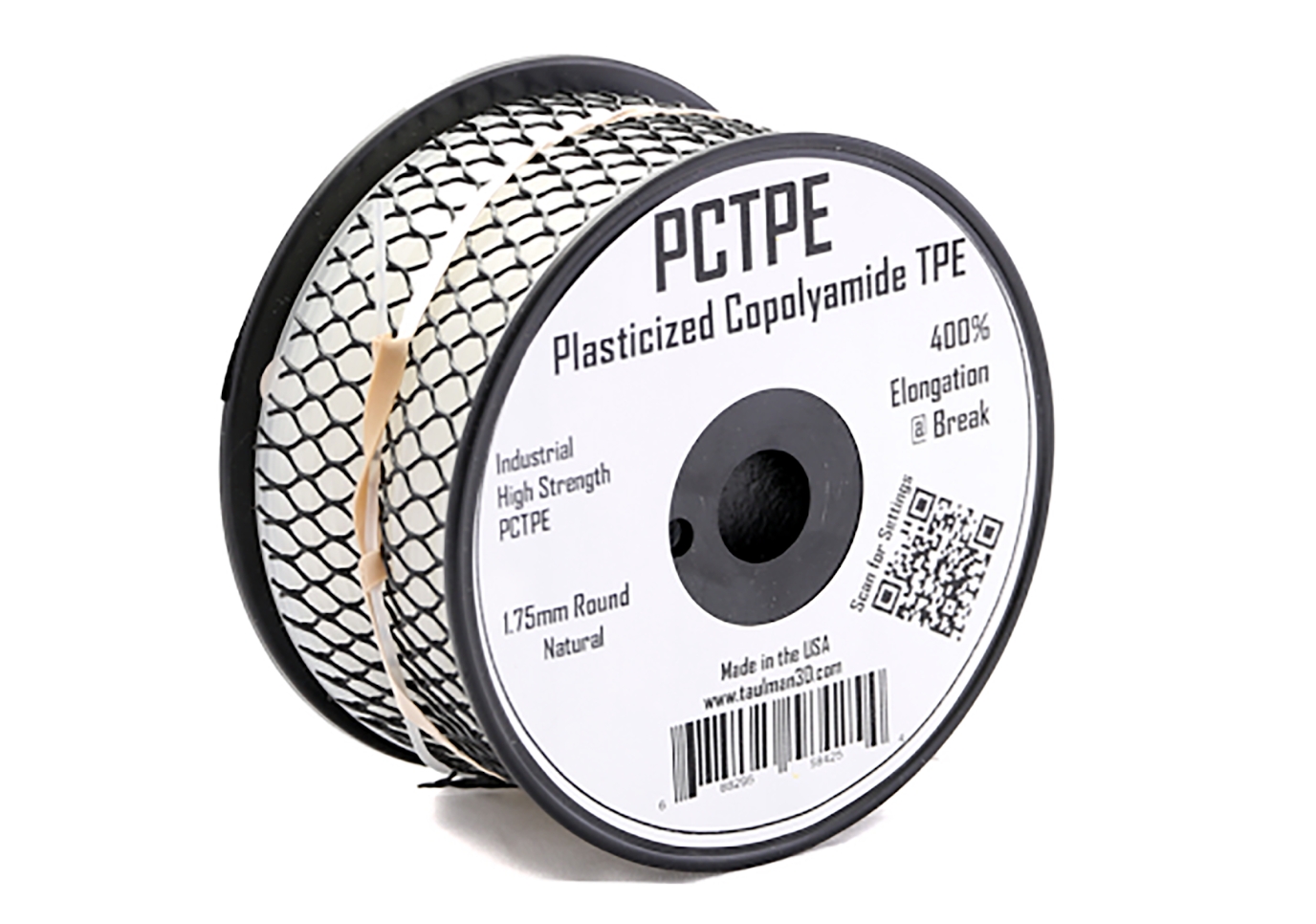
Image Source: MatterHackers
Mechanical Properties
TPA stands out for its excellent fatigue resistance and vibration-damping capabilities, making it suitable for mechanical parts that endure regular impacts1. It also boasts amazing electrical properties, as well as resistance to chemicals and weathering, which broadens its application scope significantly.
Printer Settings
● Print Speed: 30-55 mm/s, depending on the printer
● Print Temperature: Typically around 220-250°C
● Bed Temperature: Usually set between 60-80°C These settings help manage TPA’s flexibility and prevent issues such as clogging or stringing during printing.
5. TPS Filament
Example: BASF Ultrafuse® TPS 90A
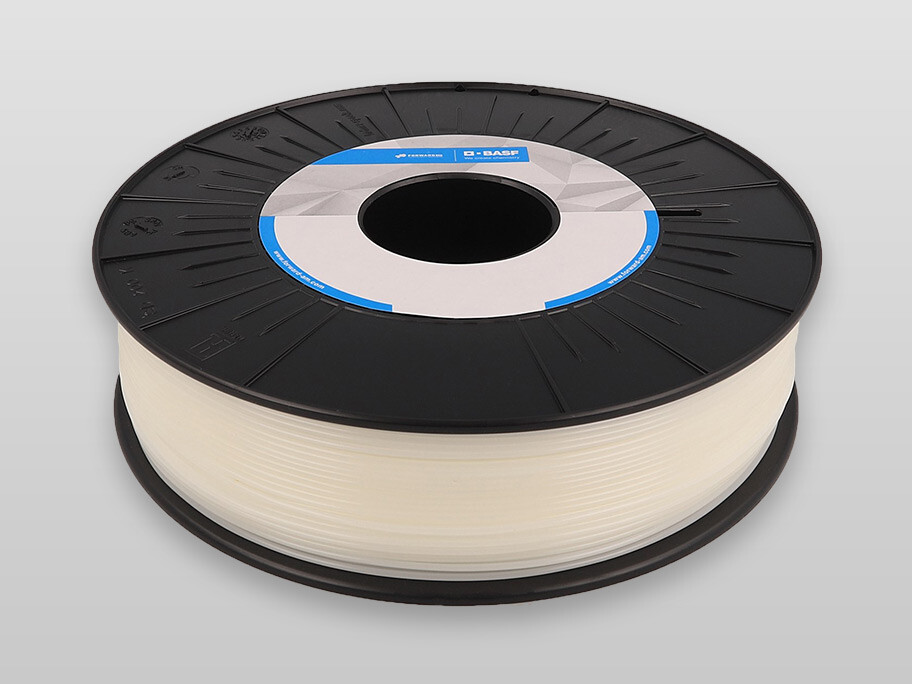
Image Source: BASF
Mechanical Properties
TPS filament, particularly the Ultrafuse TPS 90A, is a SEBS-based elastomer that offers a soft touch with more rubber-like haptics compared to other flexible materials. It has a Shore A Hardness of 89, indicating a high level of flexibility. The material exhibits excellent abrasion resistance, durability, and stretchability.
Printer Settings
● Nozzle Temperature: 260-280°C
● Bed Temperature: 70-90°C
● Print Speed: 10-30 mm/s
● Nozzle Diameter: ≥ 0.4 mm These settings help to manage the material’s flexibility and ensure a smooth printing process.
6. PEBA Filament
Example: Fillamentum Flexfill PEBA 90A
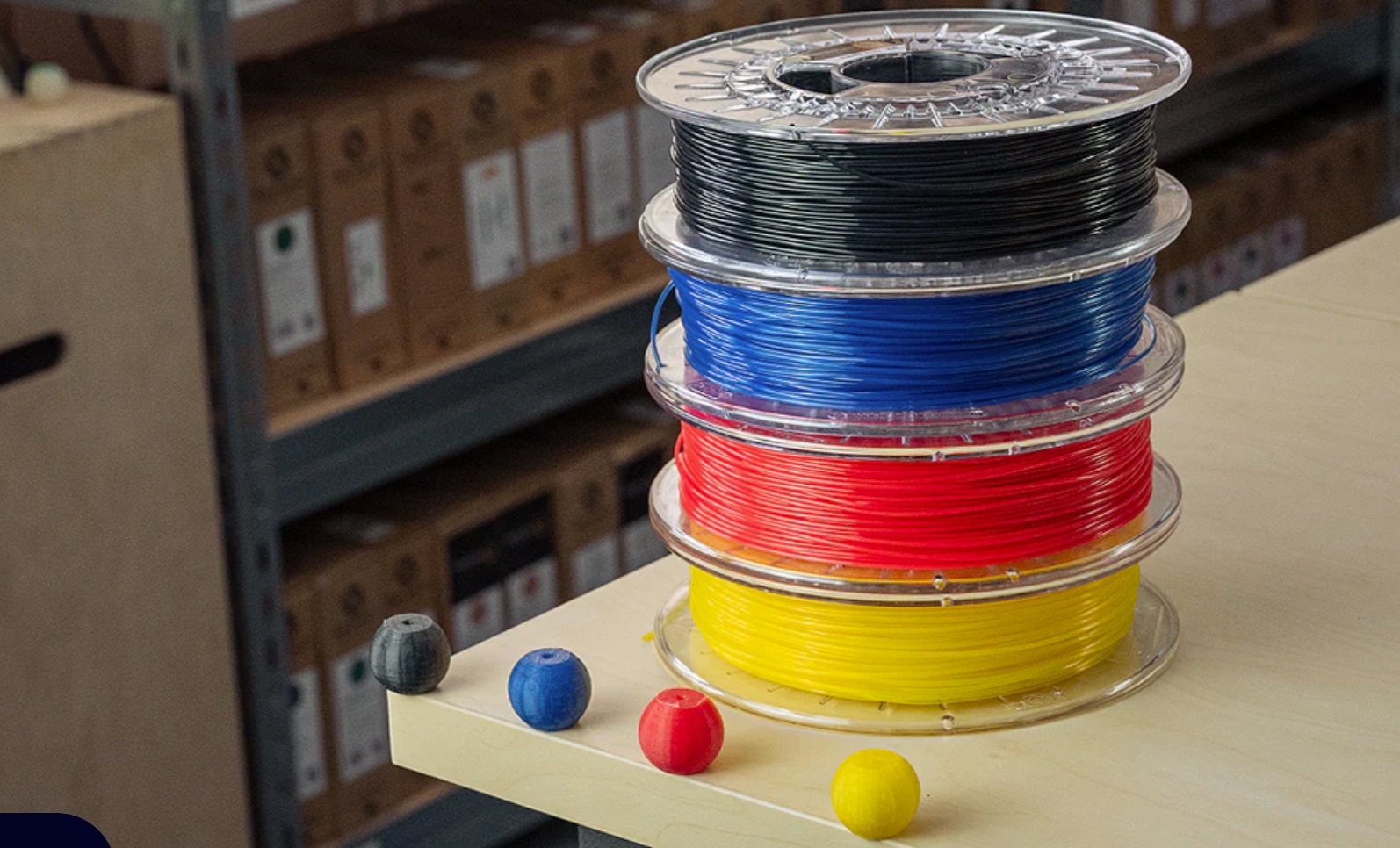
Image Source: Fillamentum
Mechanical Properties
PEBA filament is known for its excellent mechanical properties, which include high flexibility, reversible deformation, and resilience down to -60°C. It has good tensile strength, remarkable stretchability, and resists tearing under stress.
Printer Settings
● Print Speed: 20-60mm/s
● Printing Temperature: 210-260°C
● Bed Temperature: 70-90°C These settings help to manage the material’s flexibility and ensure a smooth printing process.
7. Soft PLA Filament
Example: Ataraxia Art Flexible PLA Plus
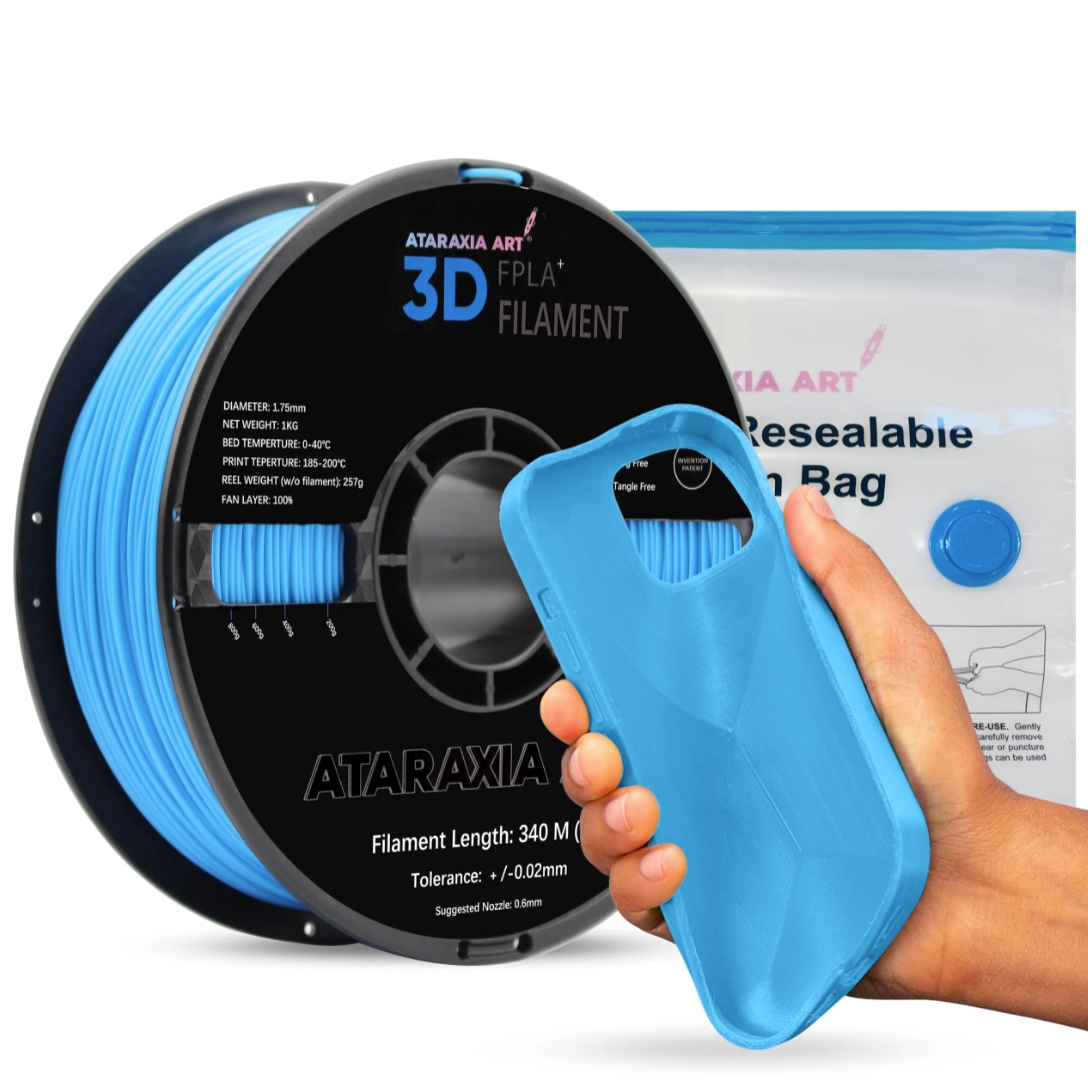
Image Source: Ataraxia Art
Mechanical Properties
Soft PLA is known for its rubber-like flexibility and good tensile strength. It has a Shore hardness of around 92A, which indicates a high level of flexibility akin to rubber. Soft PLA filaments can withstand manipulations in shape, allowing them to contract and spring back to their original form after pressure is released.
Printer Settings
● Extruder Temperature: 210-225°C
● Bed Temperature: Not necessary, but if used, keep it around 45-60°C
● Print Speed: Slightly slower than normal PLA, around 30-50 mm/s
● Retraction: Minimal or disabled to prevent clogging due to the material’s flexibility.
Common Applications of Flexible Filaments
1. Functional Prototyping and Fit Testing
Designers and engineers often use flexible filaments to create prototypes that mimic the final product’s properties. It is particularly useful for items that need to fit snugly or wrap around other objects, such as phone cases or seals. The true-to-life flexibility allows for accurate testing and adjustments before mass production.
2. Custom Tooling
Flexible filaments enable the creation of tools with ductile elements, enhancing grip and user comfort. Handles, grips, and parts of tools that require a non-slip surface benefit greatly from the properties of flexible filaments. This custom tooling is not only ergonomic but also increases the efficiency of the tools.
3. End-Use Parts
The durability and impact resistance of flexible filaments makes them suitable for end-use parts in various industries, including automotive components, medical devices, and consumer products that require a degree of elasticity. For instance, vibration-dampening components and soft contacts are often made with flexible filaments due to their shock absorbance capabilities.
4. Wearable Items
The softness and flexibility of these filaments are perfect for creating wearable items. From fashion accessories to functional wearables like wristbands and footwear, flexible filaments provide comfort and adaptability to the wearer. They are also used in the latest wave of 3D-printed shoes, where cushioning and energy retention are key.
5. Medical Applications
In the medical field, flexible filaments are used to produce prosthetics, orthopedic supports, and other devices that need to conform to the human body. Their ability to be sterilized and customized for individual patients makes them invaluable in healthcare settings.
6. Industrial Uses
In an industrial context, flexible filaments are employed for creating parts that need to withstand wear and tear, such as seals, gaskets, and hoses. Their resistance to chemicals and environmental factors makes them ideal for harsh working conditions.
7. Consumer Goods
Everyday items like phone cases, children’s toys, and household gadgets often utilize flexible filaments for their durability and tactile feel. The material’s ability to absorb impacts makes it a popular choice for protective gear.
Tips to Choose the Right Flexible Filaments
1. Assess the Flexibility Needs of Your Project
Consider the degree of flexibility required for your print. If you need a highly elastic material that can stretch significantly, look for filaments with a lower Shore Hardness rating. For less flexibility and more structural integrity, choose a filament with a higher rating.
2. Evaluate the Strength and Durability
The strength of the filament is crucial, especially for functional parts that will be subjected to stress. Check the tensile strength and elongation at break to ensure the filament can handle the demands of your application.
3. Consider Temperature Tolerance
Different filaments have varying levels of temperature resistance. If your printed part will be exposed to high or low temperatures, make sure the filament you choose can withstand those conditions without deforming.
4. Look at the Flexibility Index
Some manufacturers provide a flexibility index, which gives you a comparative idea of how their filament stacks up against others in terms of elasticity. It can be a quick reference to gauge if a filament meets your needs.
5. Check Compatibility with Your Printer
Not all 3D printers are equipped to handle flexible filaments. Ensure that your printer has the necessary hardware, like a direct drive extruder, to print with flexible materials.
6. Price Considerations
Flexible filaments can vary in price. Determine your budget and find the best filament that offers the properties you need without breaking the bank.
7. Read Reviews and Recommendations
Look for reviews from other users who have printed similar objects. Their experiences can provide valuable insights into the performance and reliability of the filament.
8. Sample Packs
If you’re still unsure, consider purchasing sample packs of different flexible filaments that allow you to test a variety of materials without committing to a full spool.
9. Post-Processing Requirements
Some flexible filaments offer more post-processing options than others. If you plan to finish or treat your prints, choose a filament that can accommodate those processes.
10. Environmental Factors
Consider the environment where the printed part will be used. If it’s likely to come into contact with chemicals or oils, ensure the filament has the necessary chemical resistance.












